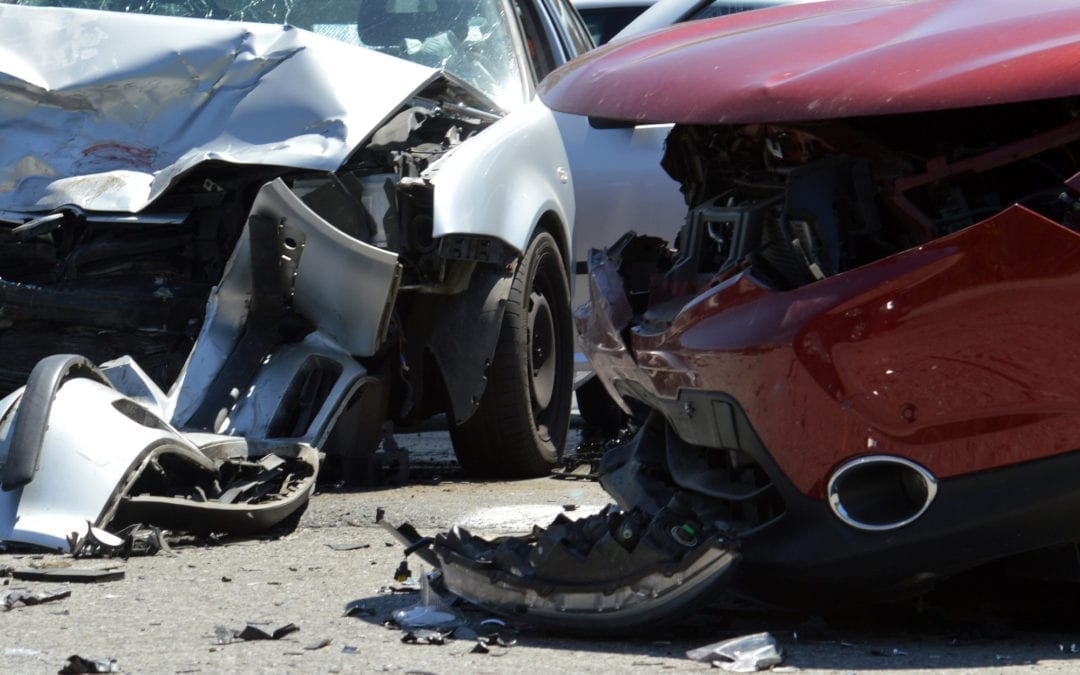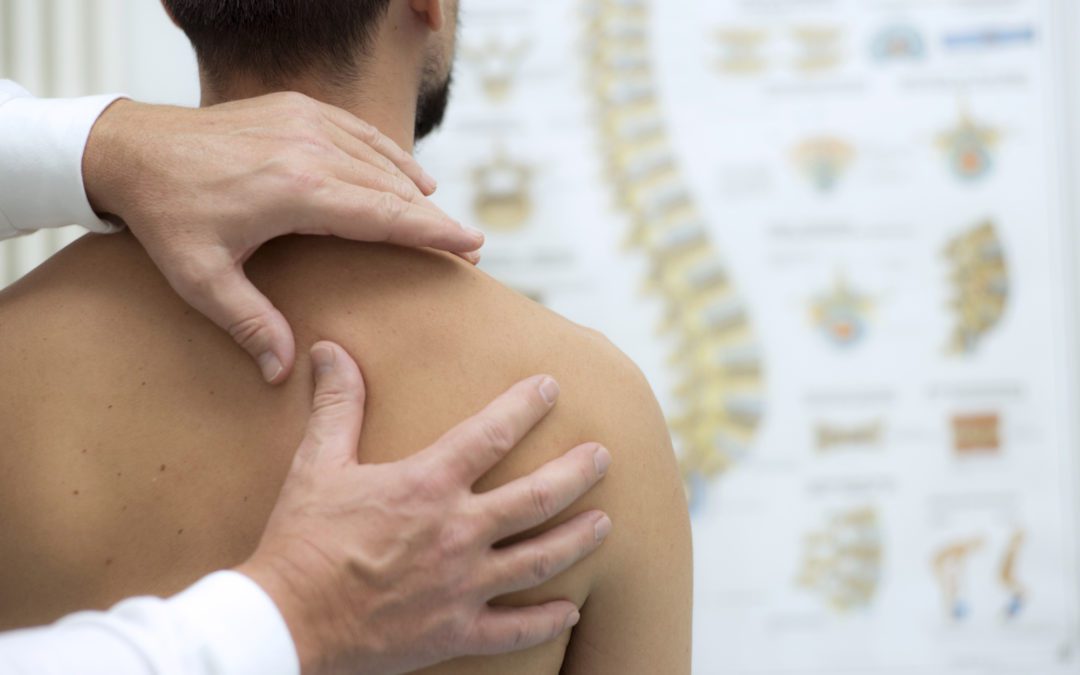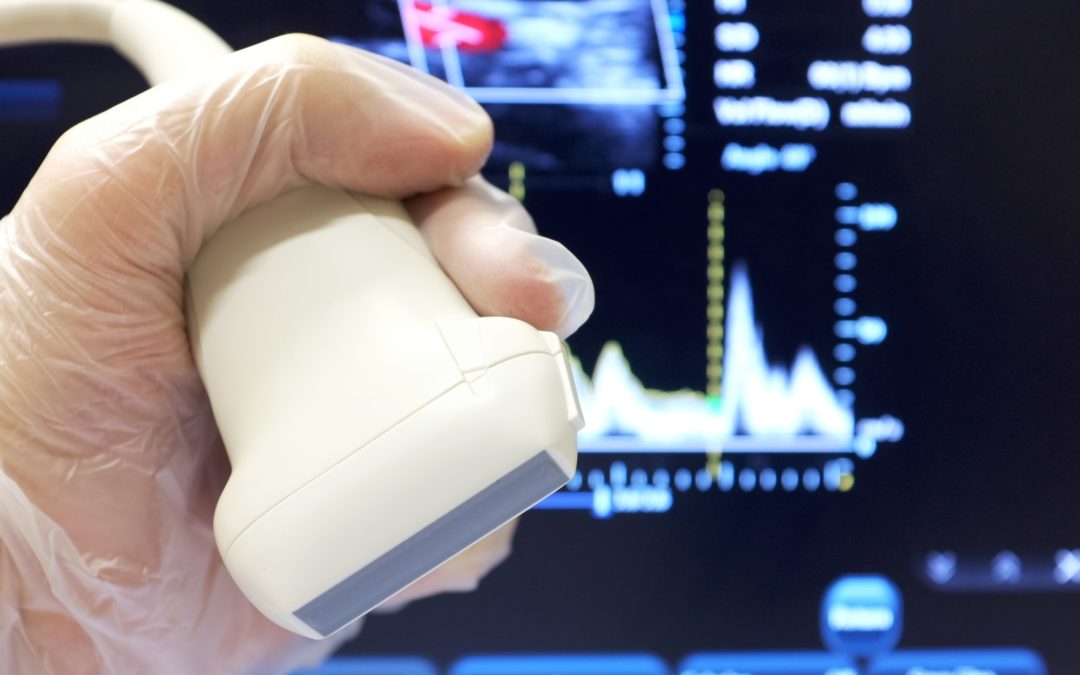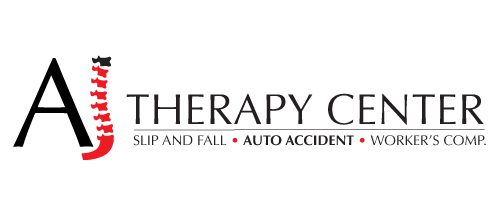
Car Accident
Between 1988 and 1996, the National Highway Traffic Safety Administration (NHTSA) estimated that 805,581 whiplash injuries occurred. Neck injuries are the most reported claims for both personal and bodily injury insurance claims.
If you’ve been in a car accident, you know just how quickly something can go wrong. Even a car traveling as slow as 10 miles per hour can cause injuries.
And if your neck has been injured and you don’t seek help, the long-term effects of whiplash can be numerous. Neck pain after car accident isn’t something to be ignored.
To help you recover quickly and enjoy a pain-free life, here are three ways to avoid the long-term effects of whiplash.
Symptoms of Long-Term Effects of Whiplash
After an accident, you may not feel the full effects of whiplash. Whiplash symptoms delayed is not uncommon.
In fact, you may not feel the full symptoms of whiplash until a few days after the impact. The injury itself may not be felt for a full 12 hours after the accident.
If you feel neck pain after a car accident or any other type of accident, it’s always best to see a physician to make sure there’s nothing more serious.
A doctor may recommend x-rays like an MRI or CT scan to ensure there are no other injuries. They may also recommend you wear a neck brace for a short period of time.
Also, it’s not uncommon for whiplash injuries to last for months or even years if you’ve been involved in a serious accident. To ensure you don’t suffer longer than necessary, contact your doctor and schedule an appointment.
Common Symptoms of Whiplash
Since delayed whiplash symptoms are common, you may feel some of these 12 hours or more after your accident.
Your neck or shoulders may be in pain and/or you may feel stiffness in these areas. Upper or lower back pain and even jaw pain are also common symptoms of whiplash.
Whiplash headache is a very common symptom as is dizziness, blurred vision, and even ringing in the ears. If you find yourself constantly tired, suffer from concentration or memory problems or have difficulty sleeping, these may be signs you have whiplash.
Numbness and weakness in your arms and legs are also not uncommon.
Of course, not all symptoms are physical. It’s not uncommon to feel anxiety after an accident. Especially a car accident where you may feel anxiety every time you have to travel.
If you have continued anxiety or feel you have PTSD (post-traumatic stress disorder), get help. Talk to friends and family, get a massage, or get in touch with a licensed therapist to help you manage your feelings.
Whiplash Isn’t Always Caused by a Car Accident
Most people assume that whiplash is caused only by car accidents. But a car accident isn’t the only way to get this type of neck injury. Whiplash can occur in all types of vehicles, including while riding a bike.
Sports are another common way people get whiplash. Certain sports like boxing, karate, and football can easily cause whiplash. Other sports like horseback riding can also cause whiplash. Even an amusement park ride can cause a neck injury if the ride is too rough.
Other ways to get whiplash are when the head is jerked violently backward, when a person receives hits to the head, when someone is hit with a heavy item and when someone is the victim of physical abuse.
1. Applying Ice and Heat for Neck Pain After Car Accident
If you have neck pain after a car accident or another type of accident, ice is a great way to help reduce pain and swelling. Make sure you wrap the ice in a thin towel or cloth before you apply it to the skin. Otherwise, you risk further injury with ice burn.
Ice your neck for 15 minutes every three to four hours for the first two or three days.
After two or three days have passed with you icing your neck injury, it’s okay to start applying heat. Moist heat is best.
You can use warm, wet towels or, even better, take a warm bath. Try using essential oils in your bath that are known to help ease sore, painful muscles.
Oils such as peppermint, lavender, and thyme are known to promote healing. They also smell great and some even help ease symptoms of anxiety.
2. Best Medications to Use for Whiplash Symptoms
Your doctor may prescribe pain medications to you. Most likely, he or she will recommend you take non-steroidal anti-inflammatory drugs like ibuprofen (Advil, Motrin) or naproxen (Aleve) to help reduce pain and swelling.
These over-the-counter medications will also help you reduce whiplash headache symptoms. Keep in mind that all medications, whether they are over-the-counter or prescribed by a physician have side effects.
Take all medications as they are prescribed and try to wean yourself off of any painkiller as soon as possible to avoid becoming dependent on them.
There are times when your whiplash symptoms are more severe and require stronger painkillers than what over-the-counter drugs like Advil can provide. Your doctor may then write a prescription for stronger painkillers and muscle relaxants.
3. Massage and Other Homeopathic Treatments
If you have neck pain after a car accident, you don’t have to put up with the pain. Instead, contact a homeopathic therapist to help you heal more quickly.
One type of therapy that’s extremely beneficial is massage therapy. Massage therapy is used to reduce muscle tension and stiffness.
Massage therapy treatments also help with a greater range of motion, circulation, and reduces headaches. It also helps reduce chronic pain symptoms.
Massage therapy can also help reduce emotional symptoms as well. This type of therapy is known to reduce tension and creates a feeling of well-being.
If massage therapy isn’t for you. There are other types of homeopathic treatments such as Rolfing and chiropractic therapy that have shown benefits for patients seeking out pain reduction.
Regular Exercise Also Helps
Don’t forget the power of exercise. To help you stay pain-free, it’s best to continue exercising your neck on your own on a regular basis.
Your neck holds up your head which weighs about 12 pounds. Regular exercises can help alleviate all types of neck pain associated with a variety of activities.
Get Help Today
Whether you were just injured or you still feel the long-term effects of whiplash, don’t wait any longer to get the help you deserve.
You can live a life pain-free. You just need to get the right type of help.
Massage therapy can help. Book your appointment with us today.

Car Accident
4 Types of Physical Therapy Treatments to Help You Recover
When undergoing physical therapy it’s important to make sure you’re getting the right treatment. Here are the 4 types of physical therapy treatment to know.
An estimated 20 to 50 million people suffer car accident injuries each year. If you’re one of them, you may want to consider visiting a physical therapist to help you completely recover. A trained physical therapist has all kinds of tools and treatments at their disposal to help heal whiplash, back injuries, and more.
Here are four types of physical therapy treatments that you can expect to help your recovery from a car accident.
1. Joint Mobilization
One of the most common therapies that physical therapists perform for faster car accident recovery is joint mobilization. This involves gently moving a person’s joints to increase flexibility and ease pain.
This is a passive treatment, meaning the patient doesn’t do any work and allows the physical therapist to move their muscles for them. Your physical therapist, however, will also show you movements that you can perform at home in between sessions to supplement healing.
2. Massage Therapy
Massages can be quite effective for soothing whiplash, a common car accident injury. A massage session can improve your range of motion and reduce muscle stiffness.
An added benefit is that it helps your mind relax along with your body. This reduces stress and contributes to psychological healing, which is just as important to treat following a traumatizing experience such as an accident.
3. Exercise
Physical activity, if done carefully and slowly at first, is actually one of the best ways to encourage healing. Your physical therapist may also use a variety of exercise tools such as exercise balls, a Pilates reformer, resistance bands, and more to work the injured area.
4. Ultrasound
Ultrasound waves penetrate the skin and tissue to target muscles and promote the healing of muscle strains and damaged ligaments. An ultrasound gel is first applied to the area to allow the wand to smoothly glide over the skin and deliver the healing waves.
Ultrasound is effective in treating car accident injuries because it increases blood flow and can reduce inflammation.
We Offer All Types of Physical Therapy Treatments
When you’re a patient recovering from a car accident injury, these are just some of the many types of physical therapy treatments you can expect to help you recover from a car accident injury. We offer these and more at our three convenient locations.
If you’re recovering from a car accident and would like to learn more about how physical therapy can help you, contact us to make an appointment.

Car Accident
3 Reasons to Start Physical Therapy After a Car Accident
A car accident can have lasting and unexpected effects on your long term health. Here are 3 major benefits of starting physical therapy after a car accident.
In 2016, there were over 34,000 fatal car crashes in the United States and over 12 million non-fatal accidents. Car accidents can be very scary and cause an infinite number of injuries. Immediately following the accident, you could have broken bones, head injuries, cuts and bruises, and more.
However, many people don’t realize that there is still a risk of injury long after the car accident has happened. With their adrenaline flowing, a victim of a car accident may not realize the extent of their injuries or that they have any injuries until later.
It is always wise to seek out physical therapy after a car accident for this reason. Keep reading to learn about three major reasons to seek professional help if you’ve been in a wreck.
1. Mitigating Long-Term Health Problems
While physical therapy can offer relief to injuries that occur during the accident, there are injuries which are not immediately noticeable. Back, neck, and shoulder pain and stiffness can occur as a result of an accident but not show up until later.
Physical therapy after a car accident can help reduce pain, stiffness, and the need for surgery. It can go a long way towards speeding up the recovery process after a car accident.
2. Avoiding Surgery
Often times injuries that don’t display symptoms until long after the accident can turn into serious issues. Sometimes, these injuries even require surgery. By seeking out physical therapy soon after the accident, you can treat these hidden injuries and reduce or get rid of the need for surgery.
Certain injuries, if left unchecked, can lead to surgery and costly hospital bills. It is always best to visit a medical professional immediately following an accident. This will help with any claims you may wish to make later on. A doctor will also be able to recommend a physical therapist to see as well as document the need or desire for physical therapy to an insurance company.
3. Improving Quality of Life
There are times when it’s hard to tell if a car accident caused your injuries. These issues can rise up years after an accident and take a serious toll on the quality of life of a person.
Physical therapy can help in a couple of ways with this. One, as mentioned earlier, is to help relieve these issues before they become serious health concerns. In this respect, physical therapy can improve quality of life before the quality of life is even diminished.
If the injuries go unchecked, however, and quality of life diminishes, physical therapy helps you take back control of your life.
Physical Therapy After a Car Accident
Physical therapy after a car accident can be beneficial to someone that’s suffered an injury. While the recovery process can be hard with injuries, it can be just as hard without visible injuries.
If you’ve been in a car accident and feel like you may have underlying injuries or wish to learn more about the benefits of physical therapy contact us today!

Car Accident
Over 2 million people are injured in auto accidents in America each year. The injuries that can result from a car accident can be quite severe.
One of the main things a person needs to do when involved in an auto collision is to seek out medical treatment. Even if you don’t feel like you are injured, you still need to let a medical professional check out you to ensure there are no internal injuries.
Injuries to the neck and head are quite common for people involved in car accidents. The road to car accident recovery can be a long one.
However, there are a number of things you can do to speed up the healing process and here are some of them.
1. Go Home to Start the Car Accident Recovery Process
The biggest mistake that most people make following a car accident is failing to go home and get some rest.
Most people fail to realize that being involved in a car accident is as traumatic as having surgery. Failing to give your body the rest it needs after an accident can lead to lots of problems in the future.
Some medical professionals maintain that failing to take time off after a car accident can add nearly six months to the recovery time. The adrenaline that floods your body following a collision can dull pain receptors and mask injuries.
While lying in bed may not be your idea of a good time, your body needs rest after an accident.
2. Your Body Needs Fluids After an Accident
Drinking at least six cups of water each day for a week after your accident is essential. Putting these extra fluids in your body can help to reduce inflammation.
You need to also put more vitamin C in your diet after an accident. This vitamin also reduces inflammation and can help greatly during the tissue repair process. The electrolytes produced by vitamin C help to neutralize the free radicals that can increase inflammation.
There are a number of electrolyte powders on the market that you can add to your water to get a boost of vitamin C.
Be sure to avoid drinking too many sodas during the car accident recovery process. The high fructose corn syrup in these drinks can interfere with the production of collagen in the body. Collagen is a necessary element when trying to heal from things like muscle tears.
3. Let Your Singing Voice Be Heard
The shock of a car accident will usually cause a person to gasp. This shock can also cause your diaphragm to tighten, which can deprive you of oxygen.
If you are having a hard time getting a deep breath following a car wreck, chances are your rib heads are jammed against your spine. This often happens when the seatbelt you are wearing during an accident suddenly snaps against your lungs during impact.
The best thing you can do to fix these issues is to sing at the top of your lungs. This not only helps to move compressed rib heads, it can relax your diaphragm as well.
If you don’t feel like singing, you can do a bit of exercise to fix these issues. Lying down on your back and holding both sides of your rib cage while breathing deeply can be helpful.
Performing these deep breathing exercises on a daily basis can make it much easier for you to decrease pain and discomfort.
4. Schedule an Appointment With an Osteopathic Physician
Once the dust from your car wreck has settled, you need to schedule an appointment with an osteopathic physician. These types of physicians are trained to use their hands to diagnose and treat injuries caused by car accidents.
Not only can these physicians check your injuries out, they can provide you with manual techniques to address things like inflammation and pain.
5. Avoid Physical Activity For a While
If you live an active lifestyle, not being able to exercise or play sports is not something you want to experience. However, you will need to avoid strenuous physical activity for a few weeks after your car accident.
Playing sports or performing demanding exercise routines shortly after a car accident can make your injuries much worse. Some people think that just because they aren’t in excruciating pain that they can push their limits after a car accident.
Doing this will usually lead to a person’s injuries getting much worse. While waiting to play sports or exercise may be difficult for you, it is the best thing for your body.
6. Light Exercise Can Be Helpful
While you need to avoid physical contact sports and weightlifting, doing light exercise can be quite helpful during the recovery process. Going for a walk on a flat surface can help you get out of bed and stretch your muscles.
Before you begin going on these walks, you need to consult with your primary physician. They will be able to give you some guidance regarding how long your walks should be and how frequently you should take them.
7. Wear The Right Shoes
When trying to recover from injuries caused by a car accident, you need to focus on wearing comfortable shoes. While high heels, cowboy boots, and platforms may be fashionable, they will not provide adequate support.
Getting a pair of athletic shoes that can provide your ankles with adequate support is a must. These types of shoes may not win you any fashion awards, but they will provide you with the support you need.
8. Be Careful What You Lift
For a while after your car accident, you will have to be careful about what you lift. Most medical professionals recommend that car accident victims avoid lifting anything over five pounds.
Trying to lift too much can put a strain on your neck and back. While it will be difficult to avoid lifting heavier things, your body will thank you for the effort.
Getting Professional Help Can Make Recovery Easier
Working with medical professionals who are familiar with the car accident recovery process is a must. These professionals will be able to provide you with the guidance you need to get your body well in a hurry.
Are you looking for more information on the recovery process following a car accident? If so, check out the helpful information on our website.

Car Accident
You need to prepare for a car accident injury. In 2019 alone, more than 2.7 million Americans were injured in a car accident. That’s nearly one percent of the country.
An accident can occur without warning, yet it can devastate your mind and body. You can get help through insurance settlements. But they may not cover everything you need.
When people think of a car accident physical therapy settlement, they think of lawyers and police officers. But a therapist can be just as helpful, as long as you go to physical therapy after a car accident.
Not convinced that you need physical therapy for car accident injuries? Consider these three ways to maximize your settlement and treatment.
1. Get a Full Physical Evaluation
You can receive a wide range of injuries in a car accident. You can receive whiplash, tearing the muscles and tendons in your neck. You can break a bone from striking something in your car.
You may not notice an injury for some time. Seat belt syndrome occurs when a person gets injured from their tight seat belt. It can cause internal bleeding in the abdomen, which may not manifest for days.
A physical therapist can give you a head-to-toe evaluation. One common tool that therapists use is vasopneumatic devices.
These devices manage swelling, which is often a sign of internal injuries. If the therapist notices a troubling sign, they can advise your physician on what to do.
A therapist can provide you with documents showing your symptoms and treatments. You can use these documents in court, bolstering your settlement case.
2. Treat Specific Areas
Physical therapists usually provide more specific treatments than physicians. When you report a pain problem to your doctor, they may give you medication. That doesn’t target the roots of your pain.
Therapists are trained in many different therapies, most of which target a specific area of the body. If you suffer from inflammation, a therapist can perform ultrasound therapy. Ultrasound technology uses sound waves to reduce sprains and tendinitis.
Many people think that therapy is for people with severe injuries, like paralysis. You can receive therapy if you suffer those injuries.
But you can also go to therapy for any reason. Your therapist will prepare a treatment plan that meets your needs.
3. Form a Connection With Your Therapist
Therapists go the extra mile. Many offer case management services. They offer mental health treatments, housing support, and even economic advice.
If you are facing a contentious court case, your therapist can serve as an expert witness. They can provide evidence on the nature of your ongoing symptoms.
Becoming friendly with them can help you recover. A positive mental attitude can diminish your pain and give you mental focus.
How to Maximize Your Car Accident Physical Therapy Settlement
A car accident physical therapy settlement can pay off extensive medical bills. But you need to work to get the most out of one.
Get a physical evaluation from your therapist. They should put into writing what your injuries are, then give the information to your lawyer. You should then get treatment for your particular injuries.
Utilize case management services for added support. Consider using your therapist as an expert witness. Their testimony can increase your settlement.
Get expert help for your health. AJ Therapy Center is St. Petersburg and Tampa’s leading physical therapy center. Contact us today.

Car Accident
Everyone has been there. You or a loved one is having a procedure done, but you have no idea what it means. Many procedures have complicated names when they are actually fairly straightforward.
One of these procedures is ultrasonic cavitation. But what is ultrasonic cavitation? Keep reading to find out exactly how it works and what it can be used for.
What Is Ultrasonic Cavitation?
Ultrasonic cavitation is a process that uses ultrasound waves to produce bubbles within a body or material. Ultrasound is just sound with a frequency that is too high for humans to hear.
Most people can hear sounds in the range between 20 to 20,000 Hz. Ultrasound refers to sounds that are above this range. The word cavitation comes from the same root as the word cavity.
It just means creating a cavity or bubble inside of a material. Typically, these bubbles are filled with air, but they can be other things. To understand how this works, it is first necessary to know a little about sound waves.
Sound waves are a type of pressure wave in which there are areas of low pressure followed by areas of high pressure. Think about the calm surface of a pond or a swimming pool.
Now, imagine you move your hand quickly back and forth in the water or at the surface. You can easily see the bubbles that form in the water. This is similar to how ultrasonic cavitation works.
Just like you create pressure differences in the water, ultrasound waves create pressure differences in a material to form bubbles.
How Is It Used in Treatment?
Now we have a better understanding of what ultrasonic cavitation is, but what is cavitation treatment? There are many different applications of ultrasonic cavitation treatment.
Ultrasound can break up kidney stones and gallstones, making them easier to pass through the body. It can also be used to treat cataracts in your eyes. High-intensity ultrasound can break up tumors in the body without the need for invasive surgery.
Ultrasound can also deliver certain drugs like chemotherapy medicine to very specific areas within the body. In this way, none of the drugs is wasted in parts of the body where it is not needed.
Ultrasound can guide other devices for different treatments such as laser treatment of varicose veins and liposuction procedures.
Ultrasound can also be important in physical therapy. Cavitation serves to stimulate the cell membranes within your body’s organs and tissues. This helps to repair the cells and can reduce inflammation.
For more information about these procedures, you can find out about ultrasound cavitation near me or physical therapy near me.
Next Steps
Now that we’ve answered the question “What is ultrasonic cavitation?” and looked at some of its uses, feel free to do some more research on your own and consult your doctor to see if this method is right for you.
If you’re looking for physical therapy in Tampa or physical therapy in St. Petersburg, please contact us for more information about how we can help with your specific needs.






